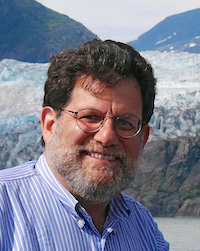How do we ask better questions? Ask Professor Dan Perlman

The Question Formulation Technique led to term papers on lemurs for students of professor Dan Perlman.
In 2012, a couple years before he established the Center for Teaching and Learning at Brandeis, Professor Dan Perlman remembers seeing an ad for a technique that he thought might encourage student learning in his classroom.
The ad was for the first public workshop on a technique used in K-12 classroom settings called the Question Formulation Technique, which had been created by the Right Question Institute. He attended the workshop and saw tremendous potential for the Question Formulation Technique (QFT) in college classrooms, but no one was using it in higher education - yet. Perlman soon adopted the method in his undergraduate courses at Brandeis and he became active with the Right Question Institute.
Five years later, the institute was approached by the National Science Foundation (NSF) to apply for a grant to fund a project that the NSF hoped could result in more impactful questions from researchers seeking funding. Working with his colleagues at the Right Question Institute, Perlman is now principal investigator on a project to systematically introduce the QFT to graduate education - “The Question Improvement Model: A Simple and Scalable Model for Improving the Question Formulation Skills of PhD Students.”
BrandeisNOW asked Perlman, founding director of the Center for Teaching and Learning and professor of biology and environmental studies about this approach to teaching and the reaction of his students.

Dan Perlman
What is the Question Formulation Technique?
In the QFT, instead of the teacher asking a question, the teacher gives the students a prompt and they then brainstorm questions in response to the prompt in small groups. They don't stop to discuss the questions; they're just trying to generate questions. The next step is to think about which questions seemed the most interesting, and work with those to improve the questions.
I use the QFT at the beginning of the semester to shift the focus from me, the professor, to the students, and in so doing I signal that I want to hear from them. This is very beneficial because while they're developing their question-asking skills, they feel that they are helping to shape the curriculum, rather than having it coming from a teacher who is dumping it onto them.
How does the QFT work?
The QFT uses four rules for producing questions. The Right Question folks spent years honing them, to get these in exactly the form they're in.
1. Ask as many questions as you can.
2. Do not stop to discuss, judge or answer the questions.
3. Write down every question exactly as it is stated, and
4. Change any statement into a question.
A key part of the QFT is choosing the prompt, such as a phrase or a book title. For my Animal Behavior class, we used a visit to the Franklin Park Zoo as our prompt. We came back to the classroom and students broke into small groups and started asking questions about things they’d observed.
We took all of their questions and sorted them. In the first round of the QFT, students asked questions like, “How do animals know how to behave?” And then the next week, they used the most interesting of their questions as a prompt to generate further questions. In the second week students generated more targeted questions, “Were the animals making noises, and if so, what do these noises mean and how do they differ from noises made in the wild?” Out of this second round came almost all their term paper projects; they came up with really good ideas for studies. For example, after the second round of going through the QFT, one student’s term paper was about the effects of the zoo environment on lemurs, “Vocalizations of Ringtailed Lemurs: Are they affected by captivity?” So we started with the trip to the zoo, went through two rounds of the QFT, and we got term paper projects.
What’s the impact on students?
Students come to the Question Formulation Technique from a variety of backgrounds, and the QFT helps all of them. Students learn to ask broader ranging and deeper questions. And I think even the sharpest students, who are already asking really good questions, get to take it a step further. Students who are only asking very concrete, straightforward, simple questions, learn how to ask better questions through working with a group of their peers.
The QFT is being used in hundreds of thousands of K-12 classrooms, and with undergrads at other universities. Is Brandeis the only place where this new method is being used with graduate students?
As far as I know, our work with PhD students in the Life Sciences at Brandeis was the first such use. Since then we’ve worked with Engineering and Science PhD students at both UMass Lowell and Northeastern University – and well over 100 students have gone through the NSF-funded program.
Do you think it’s been a success?
As educators, we don’t typically teach the skill of asking questions, but I think you can argue that it's one of the three or four most important skills that a college student, or any student, can learn. The QFT is one very good way to help students develop their question asking skills. We’re encouraged by the early results from the study and we are developing ways to objectively assess students’ progress in question formulation.
Do students get frustrated because the focus is on asking questions and not getting answers?
This came up when I gave a workshop at UMass Lowell, as many of the professors there asked, “Don't the students want answers?” I told them that you can use the QFT in different ways, some of which put the onus for finding answers on the students. In the case of my Animal Behavior course, the Franklin Park Zoo trip and two rounds of the QFT helped the students create research questions that they were going to attempt to answer through semester-long research papers. So that was perfect. And the better questions they were asking were not something that they could answer right away. It took months and 25 pages to answer them. For PhD students, this is a great way to jump-start their thinking about research questions. As one noted after a training session, “It was remarkable how very unique and unexpected questions can be generated with this process.” In fact, a senior professor who sat in on a training was surprised that the QFT led to a new research question.
Categories: Research





